 Last Updated February 9, 2025
Last Updated February 9, 2025
The most common Vitamix shopper’s question is some variant of, “I want to make smoothies, soups, and frozen desserts. Which Vitamix blender is best for me?” The answer is that all Vitamix machines work great for those tasks; which one is best depends on the volumes you want to blend and whether you want to pay for extra features.
If you don’t want to go through the nitty-gritty, here are my quick Vitamix recommendations:
Which is the best Vitamix model?
Best Value
- E310 (short/narrow container for small to medium amounts)
- Recon 5200 (tall/narrow container for small to large amounts)
- Recon E320 (short/wide container for medium to large amounts)
Money Is No Object
- Ascent X5 (latest and greatest)
The February 2025 shopping landscape
Most Vitamix models are on sale through Feb 22nd for the President’s Day Sale. Here is the sale.
Vitamix recently released a new set of Ascent models. Full details are in my Vitamix Ascent X Series Review.
The Food Processor Attachment gives more reason to consider Ascent and Venturist models, since it is not compatible with classic models. If you don’t care about the premium finish of the A3500, consider saving big on the Reconditioned Venturist.
If you are looking for the lowest possible price, I recommend choosing between the Recon 5200, the E310, and the Recon E320. The most significant difference between these models is the container they come with, so use the following Venn diagram to pick the optimal container for you. There are trade-offs between the three container options. To put it briefly, “short, narrow, or large capacity: pick 2”: 
Note to visitors from outside the United States: The model availability described on this page is for the USA (and APO/FPO addresses). If you are shopping from Canada, check out my page about Canadian Vitamix models.
For most people, I recommend choosing from the following four categories: Certified Reconditioned models, Explorian, Premium Classic, and Ascent.
Reconditioned
 If you are looking for the lowest possible price on Vitamix, reconditioned is for you. Some people are hesitant to buy reconditioned, and that is a valid concern with some companies, but Vitamix’s reconditioned units are guaranteed to be top quality. The only reasons I would avoid reconditioned Vitamix are if it is for a gift for someone who won’t understand, or if you want some of the features not available on reconditioned machines.
If you are looking for the lowest possible price on Vitamix, reconditioned is for you. Some people are hesitant to buy reconditioned, and that is a valid concern with some companies, but Vitamix’s reconditioned units are guaranteed to be top quality. The only reasons I would avoid reconditioned Vitamix are if it is for a gift for someone who won’t understand, or if you want some of the features not available on reconditioned machines.
Explorian
 If you prefer a slightly smaller container, I highly recommend the new E310, which comes with a short and narrow 48-oz container (full review). The Explorian E320 is functionally identical to the E310, but it comes with a wide container. That makes it nearly identical to the 5300. (The E320 replaces the 5300 in the model lineup, and it is mostly the same, with a few changes: it does not have the on-off switch on the side, and it does not light up when on. I don’t think these differences matter much, but there they are for anyone wondering about E320 vs. 5300.)
If you prefer a slightly smaller container, I highly recommend the new E310, which comes with a short and narrow 48-oz container (full review). The Explorian E320 is functionally identical to the E310, but it comes with a wide container. That makes it nearly identical to the 5300. (The E320 replaces the 5300 in the model lineup, and it is mostly the same, with a few changes: it does not have the on-off switch on the side, and it does not light up when on. I don’t think these differences matter much, but there they are for anyone wondering about E320 vs. 5300.)
There is now also an Explorian E520, which comes with the wide 64-oz container and adds 3 preset blending modes. With the hidden discount that gets activated after clicking a Vitamix link on this site and then adding the Recon E520 to your shopping cart, it is an excellent deal.
Premium Classic and Propel
If you want the most premium machine, but don’t want the new technology of Ascent, then the Professional Series 750 is for you. I think the Ascent machines are quite nice, but you might not like the look of their digital display, or you might want to be able to use older containers (without NFC chips).
In 2023 Vitamix released a new Series, which they are calling the Propel. Similar to the Pro 750, these machines have preset modes and a secondary on-off switch. The Propel machines also have the subtly updated styling that was released with the Explorian series: Propel 510 and Propel 750.
Ascent (Smart System Blenders)
If you want to buy into the future of Vitamix, the Ascent Series is the way to go. It’s priced in the same range as new Legacy models, but it comes with various upgrades (among them: longer warranty, timer display, can use small cups without bulky adapter, and a wireless connection to smartphone app).

 Within the Ascent Series, the A2300 is the lowest-priced model and it has everything you need. (If you’re buying reconditioned, the A2500 is the lowest-priced model, and it has all the features of the A2300, including full variable speed control, and it adds 3 preset program modes.) If you feel like upgrading, I recommend going all the way up to the A3500, because it has premium finish options. (I’m not saying that the intermediate Ascent models are a bad choice, they just wouldn’t be my choice.) See my Ascent review page for more details.
Within the Ascent Series, the A2300 is the lowest-priced model and it has everything you need. (If you’re buying reconditioned, the A2500 is the lowest-priced model, and it has all the features of the A2300, including full variable speed control, and it adds 3 preset program modes.) If you feel like upgrading, I recommend going all the way up to the A3500, because it has premium finish options. (I’m not saying that the intermediate Ascent models are a bad choice, they just wouldn’t be my choice.) See my Ascent review page for more details.
If you’ve been putting off getting a Vitamix because you’re saving up, you can get one right away with a payment plan. If you make on-time payments, there are zero financing fees.
You can leave a comment below or contact me if you are still having trouble deciding which one to get.
Comparison of pre-Ascent models follows
If you want to quickly see the relation between all of the different Vitamix models, you can jump ahead to my comparison chart.
I made an interactive tool to help explore the different features. Try playing with it to get a sense of which you are interested in. You can click any model to go to its Vitamix.com page, or you can read more about the different models below.
+ Show model selection tool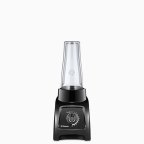 Recon S30
Recon S30  Recon 2-Speed
Recon 2-Speed  Recon 5200
Recon 5200  Recon 5300
Recon 5300  Recon Pro 500
Recon Pro 500 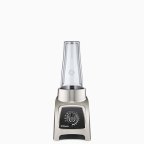 Recon S55
Recon S55  S30
S30  2-Speed
2-Speed 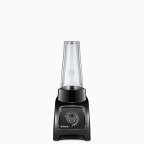 S50
S50  Recon 7500
Recon 7500  5200
5200  S55
S55 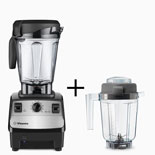 Recon 5300 + 32oz
Recon 5300 + 32oz  Recon Pro 750
Recon Pro 750  7500
7500  Pro 500
Pro 500  Recon 7500 + 32oz
Recon 7500 + 32oz  Pro 750
Pro 750 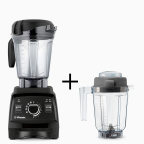 Recon Pro750+32oz
Recon Pro750+32oz  7500 + 32oz
7500 + 32oz  Pro 750 + 32oz
Pro 750 + 32oz  780
780 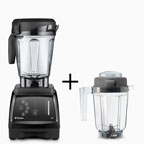 780 + 32oz
780 + 32oz(If you want the 32-oz container, you have to add it to your cart separately: 32-oz container link)
If you’re overwhelmed by the choices and just want to know my preference, I’ve used all of the different types of Vitamix blenders, and before I started using Ascent, the one I used on a daily basis was the 7500, with an extra 32-oz container for blending smaller amounts. (For the best deal, check out certified reconditioned.) All of the models are excellent, and I don’t think there is a wrong choice. (Plus, if you change your mind in the first 30 days, you can get a full refund, including free shipping both ways.)
Summary of Differences
These are the five key decisions to make when deciding which Vitamix to buy:
The following comparison chart shows the relations between the different machines in the S-Series, C-Series, and G-Series. The machines within most boxes of the chart are identical, but they come with different accessories and cookbooks (the exceptions are the S50 and S55, where the S55 has 2 more presets than the S50, and the Pro 750 and Vitamix 780, where the 780 has a flat touchpanel control). Generally the differences in accessories/cookbooks are pretty marginal, so I’d recommend going for the lowest price model within the box.

(“+” indicates there are also more expensive options in addition to the price listed in the chart. The following machines are not shown because they do not fit in with the rest: the Vitamix Turboblend Two Speed and Three Speed lack variable speed control, and the Vitamix 5300 and 6500 are a hybrid of the 6300 and 7500—i.e. they have a 7500 container on a 6300 base, without or with presets.)
Personal Blender? (S-Series vs. C-Series and G-Series)
(Vitamix S30 and S55 vs. 5200, 7500, et al.)
 In 2014 Vitamix released the Vitamix S30. It is smaller than the other Vitamix models, and also comes with a combination blending container/to-go smoothie cup. The Vitamix S50 and Vitamix S55 came out in 2015, and they are the same as the S30 but add preset modes. Since these models are significantly different from all the other models, I put up a detailed Vitamix S30 and S-Series review. If you are considering a smaller blender, or like the idea of blending in a to-go smoothie cup, you should check them out. Not surprisingly, the S-Series’ smaller size means that their maximum capacity is lower the other models (40 oz vs 64 oz).
In 2014 Vitamix released the Vitamix S30. It is smaller than the other Vitamix models, and also comes with a combination blending container/to-go smoothie cup. The Vitamix S50 and Vitamix S55 came out in 2015, and they are the same as the S30 but add preset modes. Since these models are significantly different from all the other models, I put up a detailed Vitamix S30 and S-Series review. If you are considering a smaller blender, or like the idea of blending in a to-go smoothie cup, you should check them out. Not surprisingly, the S-Series’ smaller size means that their maximum capacity is lower the other models (40 oz vs 64 oz).
Variable Speed?
(Vitamix Two Speed vs. 5200 and Vitamix 6000 vs. 6300)
 The variable speed control found on all Vitamix machines except for the Two Speed and 6000 is useful for when you don’t want to fully liquefy your blend. Examples are pesto, salsa, or chopping vegetables. If you don’t have variable speed, you can get away with quickly pulsing, but you won’t have quite as much control. The variable speed also makes the “bubble removal trick” more effective, although pulsing on low speed also works.
The variable speed control found on all Vitamix machines except for the Two Speed and 6000 is useful for when you don’t want to fully liquefy your blend. Examples are pesto, salsa, or chopping vegetables. If you don’t have variable speed, you can get away with quickly pulsing, but you won’t have quite as much control. The variable speed also makes the “bubble removal trick” more effective, although pulsing on low speed also works.
Preset Programs?
(Vitamix Two Speed vs. 6000, Vitamix 5200 vs. 6300, Vitamix Professional Series 200 vs. Professional Series 500, Vitamix S30 vs. S55, and Vitamix Professional Series 300 vs. Professional Series 750)
 The preset programs on the 6000, 6300/Pro 500, S55, and Pro 750 allow you to select a program, turn it on, and then the machine will automatically ramp up the speed and then shut off after a certain amount of time. There are a number of reasons that people appreciate this function:
The preset programs on the 6000, 6300/Pro 500, S55, and Pro 750 allow you to select a program, turn it on, and then the machine will automatically ramp up the speed and then shut off after a certain amount of time. There are a number of reasons that people appreciate this function:
• You can start the machine and “walk away” to do something else.
• If you strictly follow recipes the presets can yield more consistent results.
• Presets can give new users more confidence with the machine.
However, the presets do not work perfectly every time. Sometimes ingredients require tamping to start circulating past the blades, so you can’t always “walk away.” Also, the preset time might not be the optimum blending time if you modify a recipe. You may find that your smoothie is not fully blended after the smoothie program runs, so you have to run it again. A commercial coffee or smoothie shop makes the same recipes over and over, so in that setting presets are extremely useful. If you constantly make new combinations and of differing amounts, as many home users do, the settings may be less useful. It’s not too hard to tell when something is sufficiently blended, and after a few trials anyone should be able to figure it out. For these reasons, I personally would not pay extra for the preset settings. However, I know many people who have the presets love them. One thing to remember is that the machines with presets still have the variable speed knob for full manual control. If you don’t mind the added cost of presets, you can always switch back and forth to manual control.
C-Series vs. G-Series (Next Generation)?
(Vitamix 5200 vs. 7500, and Vitamix Professional Series 500 vs. Professional Series 750)
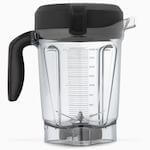 Vitamix released the “Next Generation,” aka “G-Series,” models in 2012. Both the base and the pitcher have an updated design. The base has slightly better sound muffling and also has better airflow which means that it can work harder before it overheats. To go with the better-cooled motor, the updated pitcher has a 4-inch blade instead of the Standard/Classic “C-Series” 3-inch blade. The 4-inch blade is in a shorter and wider container that has the same capacity as the 64-oz C-Series container.
Vitamix released the “Next Generation,” aka “G-Series,” models in 2012. Both the base and the pitcher have an updated design. The base has slightly better sound muffling and also has better airflow which means that it can work harder before it overheats. To go with the better-cooled motor, the updated pitcher has a 4-inch blade instead of the Standard/Classic “C-Series” 3-inch blade. The 4-inch blade is in a shorter and wider container that has the same capacity as the 64-oz C-Series container.
Advantages of the wider design:
• less need for the tamper (ingredients fall into the blades more easily)
• better chopping capability (you can course-chop more ingredients at a time)
• easier to scrape thick mixtures out
Advantage of shorter design:
• easier storage (at 17.5” tall, the container with lid on the base fits under standard kitchen cabinets)
Advantages of the 4-inch blade:
• faster processing time
• under some circumstances, marginally smoother blends
The one disadvantage of the new container is that for small volumes of under ~2 cups it does not work quite as well as the C-Series narrow container. The G-Series wider design causes two things to happen. First, there is more splashing up onto the inside of the lid and upper walls of the container, which means you lose a small amount of your blend unless you carefully scrape off the lid and walls. Second, you need slightly more volume to cover the blades and get good circulation going. The minimum volume to blend depends on what you are blending, and also on how much effort you are willing to spend pushing ingredients back into the blades. For example, for best results, the narrow containers can make nut butter easily by starting with 3 cups of nuts, whereas the wider Next Generation containers do best with 4 cups of nuts. For easier, more liquidy, blends, you can go below 1 cup in either container, but Next Generation containers will splash around more.
This disadvantage is a non-issue if most of your blends are over 2 cups, or if you are willing to spend a bit more to buy an additional narrow container, which will give you the best of both worlds. I like the 32-oz container for this purpose, although the 48-oz container has the same narrow bottom so it works just as well. The 48-oz container is just a bit bulkier on the outside because it sits outside the centering posts instead of inside of them, and its top is wider as well.
(The narrow C-Series Vitamix containers are compatible with G-Series models, but the G-Series containers are not recommended for use on C-Series models. The longer G-Series blades increase the load, and Vitamix does not recommend the C-Series cooling system for those increased loads.)
Reconditioned?
 Buying reconditioned is a great way to save money. For more details on deciding about buying reconditioned, see my refurbished Vitamix page.
Buying reconditioned is a great way to save money. For more details on deciding about buying reconditioned, see my refurbished Vitamix page.
Continue on for more details of each model type…
The array of different Vitamix blenders is a bit confusing, but it turns out that there is a lot of redundancy between the different models. I am only discussing models made for consumer/home use. Their commercial blenders are not ideal for home use because they are generally more expensive and have shorter warranties (3 years vs 7 years for home use; they are warrantied for constant use—think of how many times per day a blender at Jamba Juice runs compared to at your home).
The Vitamix website currently lists over 30 different home models, but they are all variants of three main designs: “personal” (S-Series), “standard/classic” (C-Series), and “next generation” (G-Series). For each of these main designs there are a few different options, to make a total of 8 different machine types. The rest of the models have identical bases, but come with different containers and/or accessories.
S-Series Motors
If the smaller size, dishwasher safe container, and “to-go” blending container appeal to you, please read the full details at my Vitamix S30, S50, and S55 review. For quick reference, the size of the base is 8.3″ deep x 5.9″ wide x 7.7″ tall. With the 20-oz to-go container the total height is 14.55″. The height is 15.66″ with the 40-oz container. These models have lower power, but they are still capable of making all of the usual Vitamix creations, just in smaller quantities.
C-Series Motors (Standard/Classic)
There are three types of bases of the standard variety. The differences are in the controls. The dimensions of the base of these machines are 8.75″ deep x 7.25″ wide x 8.25″ tall. There are three different container size options: 32 oz, 48 oz, and 64 oz, which result in height of base plus container/lid of 16.9″, 17.4″, and 20.5″ respectively.
Standard, no-variable speed (Vitamix TurboBlend Two Speed and Three Speed)
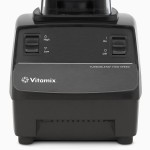 TurboBlend Two Speed (
TurboBlend Two Speed ($399$349); reconditioned for $299. This machine comes with a 5-year warranty and lacks the variable speed knob. Variable speed is useful for cases where you want to have finer control over the texture (i.e. if you don’t want a totally smooth purée). However, you can accomplish some non-liquefying chopping tasks by quickly pulsing the machine. While this is the most affordable new machine, I’d highly recommend looking at the reconditioned 5200, which has the same warranty and adds variable speed for $70 less.
In May 2016 Vitamix came out with a new no-variable speed machine, the TurboBlend Three Speed($499). It is exactly what it sounds like: it has three speed settings: low, medium, and high. It also has a pulse switch, which does the same thing as switching the start-stop button on and off. The pricing on this model is a bit strange, since for $50 less you can get a machine with fully variable speed. Plus, the TurboBlend 3-Speed comes with a 5-year warranty, instead of the 7 years on machines like the 5200.
Standard variable speed (Vitamix 5200 et al.)
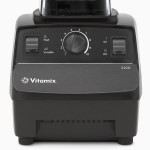 Until recently this was Vitamix’s bread and butter, and they have a lot of models to show for it: 5200 ($449), TurboBlend VS (retired), CIA Pro (retired), Pro 200 ($499), Creations II ($449), and Creations GC (retired); reconditioned for $329. These machines are essentially identical. Some are available with a shorter 48-oz container instead of the 64-oz container. The smaller container is nice because it’s more compact (and fits under standard kitchen cabinets), but of course its capacity is lower. The aesthetics of the switches and dial are slightly different between the different models. The Creations models come with a 5-year warranty, while the rest are 7 years. The 5200 comes with their “whole foods cookbook,” the TurboBlend VS comes with a vegetarian/vegan/raw cookbook and a nutmilk straining bag, the Pro models come with a cookbook with restaurant-oriented recipes (the CIA one—that’s Culinary Institute of America—comes with an additional recipe book). Note that if you buy reconditioned, you cannot choose which of the Standard models you are getting; Vitamix will choose for you based on availability, but remember that functionally they are identical.
Until recently this was Vitamix’s bread and butter, and they have a lot of models to show for it: 5200 ($449), TurboBlend VS (retired), CIA Pro (retired), Pro 200 ($499), Creations II ($449), and Creations GC (retired); reconditioned for $329. These machines are essentially identical. Some are available with a shorter 48-oz container instead of the 64-oz container. The smaller container is nice because it’s more compact (and fits under standard kitchen cabinets), but of course its capacity is lower. The aesthetics of the switches and dial are slightly different between the different models. The Creations models come with a 5-year warranty, while the rest are 7 years. The 5200 comes with their “whole foods cookbook,” the TurboBlend VS comes with a vegetarian/vegan/raw cookbook and a nutmilk straining bag, the Pro models come with a cookbook with restaurant-oriented recipes (the CIA one—that’s Culinary Institute of America—comes with an additional recipe book). Note that if you buy reconditioned, you cannot choose which of the Standard models you are getting; Vitamix will choose for you based on availability, but remember that functionally they are identical.
Sometimes these models are listed with their color-specific SKU. All of the following models are identical to the 5200, they just come with different colors and names: Vitamix 1709, 1363, 1364, 1365, 1709, 1723, 1732. They also sometimes go by VM0103. Vitamix 1978 is also the same, but comes with a 48-oz container.
Standard variable speed + presets (Vitamix 6300 and Professional Series 500)
 Pro 500 ($559) and 6300 (retired); reconditioned for $379. These are the same model; the only difference is that the 6300 comes with the “Savor” cookbook, which has a broader range of recipes than the Pro 500’s “Create” cookbook, which focuses more on restaurant-style recipes that tend to be richer.) They have 3 preset programs that run the blender for a certain amount of time and speed for smoothies, frozen desserts, and hot soups. Their switches are slightly different from the non-preset models. The non-preset models have an on-off switch, a variable speed knob, and a high-variable speed switch. The preset ones have moved the highest speed setting onto the knob and replaced the high-variable speed switch with a pulse switch. This is really a minor aesthetic difference, since you can achieve pulsing on the non-preset models by quickly flicking the on-off switch on and off.
Pro 500 ($559) and 6300 (retired); reconditioned for $379. These are the same model; the only difference is that the 6300 comes with the “Savor” cookbook, which has a broader range of recipes than the Pro 500’s “Create” cookbook, which focuses more on restaurant-style recipes that tend to be richer.) They have 3 preset programs that run the blender for a certain amount of time and speed for smoothies, frozen desserts, and hot soups. Their switches are slightly different from the non-preset models. The non-preset models have an on-off switch, a variable speed knob, and a high-variable speed switch. The preset ones have moved the highest speed setting onto the knob and replaced the high-variable speed switch with a pulse switch. This is really a minor aesthetic difference, since you can achieve pulsing on the non-preset models by quickly flicking the on-off switch on and off.
Some people love the presets because you can set it and walk away (assuming the mixture is circulating and you don’t need the tamper), and because they get more consistent results. However, the more consistent results will only hold if you always add the same quantities and types of items to the blender. For example, if you’re making a small smoothie, you can blend it for less time than if you were making a large one. One other thing is that you can set the non-preset machines and walk away—you just have to come back to stop them. I often use the blending time to rinse off the knife and cutting board that I used. You’re not likely to forget that the Vitamix is running because it’s loud enough to hear throughout the house. The variable speed knob goes to the same high speed as the previous models on high, but it’s lowest setting is a bit faster than on the 5200 et al., so you lose a tiny bit of fine control. Whether the presets are worth it is a personal question—I wouldn’t pay extra for them, but some people love them.
Standard no variable speed + presets (Vitamix 6000)
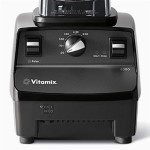 6000 (retired). Released October 2013, this is more of a mash-up of existing machines than a truly new one. It’s a sort of blend between the Two Speed, and the 6300. It does not have variable speed control, but it has six preset timed blending settings. These settings will automatically ramp up the speed, and then turn it off after a specified time of 20 sec, 30 sec, 1 min, 1.5 min, 4.5 min, or 6.5 min. Like the 6300, the pulse control is spring-loaded so that it only stays on as long as you hold it down, and it blends at a medium-low speed.
6000 (retired). Released October 2013, this is more of a mash-up of existing machines than a truly new one. It’s a sort of blend between the Two Speed, and the 6300. It does not have variable speed control, but it has six preset timed blending settings. These settings will automatically ramp up the speed, and then turn it off after a specified time of 20 sec, 30 sec, 1 min, 1.5 min, 4.5 min, or 6.5 min. Like the 6300, the pulse control is spring-loaded so that it only stays on as long as you hold it down, and it blends at a medium-low speed.
G-Series Motors (Next Generation)
In 2012 Vitamix released a new generation G-Series base with improved airflow that makes it run cooler and quieter than the classic C-Series one. With the improved cooling, the G-Series base can use a new pitcher design that is wider and has longer blades. This design makes the tamper less necessary, and makes it easier to get thick mixtures out. The longer blades also process food faster and work better for chopping. The G-Series machines are compatible with the C-Series containers, so if you want to use the dry blade you can use the same classic dry container. Dimensions are 9.4″ deep x 7.7″ wide x 17.5″ tall (with new-style 64-oz container in place). For more details of sizes, check out the PDF footprints I made for my Vitamix S30 review.
Next generation motor (Vitamix 7500, Professional Series 300, and Creations Elite)
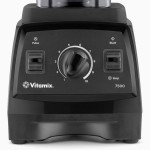 7500 ($529), Creations Elite ($557.50), and Pro 300 ($559); reconditioned for $439. These are all the same machine, so don’t worry about the note on the Reconditioned Next Gen page that says that the label may reflect any of these models. The only difference is the name printed on it. One point of confusion is that the Creations Elite is sold new with a smaller container, but if you happen to get sent a Creations Elite as a Reconditioned Next Gen, it will come with the same low profile 64-oz container that the 7500 comes with.
7500 ($529), Creations Elite ($557.50), and Pro 300 ($559); reconditioned for $439. These are all the same machine, so don’t worry about the note on the Reconditioned Next Gen page that says that the label may reflect any of these models. The only difference is the name printed on it. One point of confusion is that the Creations Elite is sold new with a smaller container, but if you happen to get sent a Creations Elite as a Reconditioned Next Gen, it will come with the same low profile 64-oz container that the 7500 comes with.
Next generation motor + presets (Vitamix Professional Series 750 and Vitamix 780)
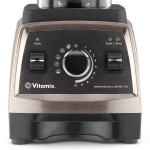
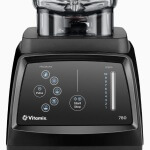 Pro 750 ($599–$649), 780 ($719); available reconditioned: 750 for
Pro 750 ($599–$649), 780 ($719); available reconditioned: 750 for $519–$569$499, and 780 for $519$399. These models have 5 presets: smoothies, frozen desserts, purées, hot soups, and self-washing. If you want to see more details of exactly what the presets do, check out my page about demystifying Vitamix presets. The 780 is identical, except that it has a touchpanel control interface. See my Vitamix 780 review for more details.
Vitamix Heritage 750 vs. Original 750?
In late 2015, Vitamix released a new version of the Pro 750: the Heritage line. The Vitamix Heritage 750 is functionally equivalent to the original Pro 750, but it has two differences on the exterior of the base. The upper shell (see diagram below) is now metal on the Heritage models. The Vitamix website doesn’t put Heritage in the model title, but it’s there in the description.
 The original 750 came in a brushed stainless finish option, but the upper shell was plastic with a thin metallic coat that could be scratched or scuffed. (When I tested the original 750 for a couple of months, I did not see any problems, but I have heard that some people have noticed scratches/scuffs.) The solid metal of the new Heritage models is more durable. Also, the metal shell muffles the the motor a bit more than the plastic, making the Heritage models a bit quieter.
The original 750 came in a brushed stainless finish option, but the upper shell was plastic with a thin metallic coat that could be scratched or scuffed. (When I tested the original 750 for a couple of months, I did not see any problems, but I have heard that some people have noticed scratches/scuffs.) The solid metal of the new Heritage models is more durable. Also, the metal shell muffles the the motor a bit more than the plastic, making the Heritage models a bit quieter.
 The other minor difference is that the Heritage models’ front panel has fewer backlights: Heritage models light up the indicators above the pulse and start-stop switches, whereas the original Pro 750 has backlights around the central knob as well.
The other minor difference is that the Heritage models’ front panel has fewer backlights: Heritage models light up the indicators above the pulse and start-stop switches, whereas the original Pro 750 has backlights around the central knob as well.
The Heritage metal is available in brushed stainless and copper finishes. (Currently on Vitamix.com, the Heritage options are listed on the main Pro 750 page, and the old brushed stainless finish is discontinued.)
I believe it is called Heritage because it is a throwback to the original Vitamix models that had all-metal bases. The plastic that Vitamix has been using for their bases for the past 25 years is extremely durable, so this change won’t affect functional longevity. That said, the elegant finish of the Heritage models will now likely stay unblemished for longer. It’s also nice that Vitamix did not increase the price for this upgrade.
The Vitamix 5300 and 6500
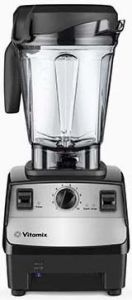 5300 ($529) and 6500 ($599); reconditioned for $360. Vitamix does not currently sell the new models online, only the reconditioned one. These are “new” models for 2015, although they are actually just slightly unexpected mash-ups of previous models. They are a hybrid between a 6300 and a 7500. They use the wide Next Gen (G-Series) container but they have a Classic (C-Series) base. The 5300 has variable speed and a pulse control switch, and has no presets. Meanwhile, the 6500 has the same three presets as the 6300. (Further evidence of equivalence between the 5300/6500 and C-Series models is on the Reconditioned C-Series 6300/Pro 500 page: it says its base may be a 6500.)
5300 ($529) and 6500 ($599); reconditioned for $360. Vitamix does not currently sell the new models online, only the reconditioned one. These are “new” models for 2015, although they are actually just slightly unexpected mash-ups of previous models. They are a hybrid between a 6300 and a 7500. They use the wide Next Gen (G-Series) container but they have a Classic (C-Series) base. The 5300 has variable speed and a pulse control switch, and has no presets. Meanwhile, the 6500 has the same three presets as the 6300. (Further evidence of equivalence between the 5300/6500 and C-Series models is on the Reconditioned C-Series 6300/Pro 500 page: it says its base may be a 6500.)
The reconditioned 5300 is the most affordable option for a machine with the short/wide container.
The strange thing about these models is that previously Vitamix stated that Next Gen containers should not be used on Classic bases because they do not have the updated airflow design that cools the motor more effectively.
I strongly suspect that the 5300 has the same microprocessor speed control as the 7500, Pro 750, and 6300, just without the presets. (You can read about the speed control of the different machines on my Vitamix RPM measurement page.) The microprocessor speed control should help protect the motor when using the wide container at high loads and very low speeds, but at maximum speed it shouldn’t make a difference. The marketing copy for the 5300 says that it comes “with a faster, yet quieter, motor,” but I am skeptical of those claims [Update: interestingly, Vitamix removed that phrase].
The 5300 and 6500 are a bit louder than the G-Series bases, which have sound-dampening technology not present in the C-Series bases. At the same price point, I would prefer the 7500.
Satisfaction Guarantee
Vitamix has a 30-day satisfaction guarantee, so if you have second thoughts you can return a machine within the first 30 days for a full refund and they even pay return shipping.
Warranty
If your machine has any problems during the warranty period of 5 or 7 years, Vitamix will repair or replace it, and they cover shipping costs both ways. For more details about warranties, check out my Vitamix Warranty page.
Reconditioned Vitamix
 I know I already mentioned reconditioned machines, but I want to restate what a great deal I think they are. These factory-refurbished machines offer the best prices you’ll find on Vitamix: 5200 for $329, Pro 500 for $379, and 7500 for $439. For more details, see my refurbished Vitamix page.
I know I already mentioned reconditioned machines, but I want to restate what a great deal I think they are. These factory-refurbished machines offer the best prices you’ll find on Vitamix: 5200 for $329, Pro 500 for $379, and 7500 for $439. For more details, see my refurbished Vitamix page.
Payment Plans
Want to start blending right away, but don’t want to pay the full price up front? Vitamix offers payment plans with zero interest and no fees if you make payments on time. For more information, check out my payment plan page.
Free Shipping
Clicking on any Vitamix link on this page will automatically apply a promotion code, which gives you free shipping on your order of a Vitamix machine (or anything else on Vitamix.com over $50) in the U.S. or Canada. For more details, see my page about the Vitamix promotion code.
Extra Bonus
If you order via a link on this site, Joy of Blending can get a commission. I deeply appreciate your support, and, to thank you, I want to help you get the most out of your new machine. I try to answer all questions from everyone, but sometimes I get swamped. If you order through one of my links, I will give you a private way to contact me so that I can answer your questions before visitors who are not on the special list. Please make sure my link is the last link you click before placing your Vitamix.com order. Then just forward your order confirmation to thanks@joyofblending.com.
Recommended Accessory
I highly recommend a spatula for getting the last bits of thick mixtures out of the container. For the narrow containers I recommend a long narrow spatula. For the wide containers, I recommend Vitamix’s under-blade scraper.
Dry Container
If you’re wondering if you should get a dry container, this new post is for you: Is the dry container worth it?
Phew… so that completes the Vitamix model round-up. I’m looking forward to getting back to describing some actual recipes!
Or follow along on Twitter or Facebook:

Rather than the 7500 plus the smaller 32 oz container would there be any drawback with the Creations Elite that comes with a smaller 48 oz container versus the 64 oz one? Sort of splitting the difference between the 64 oz and the 32 oz by going with just the one 48oz container.
There are various pros and cons, but a single 48-oz container is a great choice for some people. Note that you can also get it for cheaper with the 5200 with compact container.
A single 48-oz container is a good choice if you:
By forgoing the G-Series wide container, you do miss out on its less need for a tamper and ability to chop larger amounts at a time, but those are not overly important.
Thanks so much for this! It’s the best vitamix comparison I’ve seen anywhere online
Can you still make nut butters with the wider 64oz container? I have read reviews that say due to its wider design it tends to not mix all the ingredients while blending smaller amounts.
Yes, the wide container can make perfectly good nut butter. And yes, with its wider design, you need a bit more for it to blend easily. For nut butter, you can blend ~3 cups of nuts with the narrow containers, whereas the wide container needs ~4 cups. If you try to make less than that, the nuts will fly away from the blades and it will be difficult to get the mixture to circulate.
Thank you very much. I’m glad I found this website. My wife and I will be purchasing a recon 5200 or 7500. We primarily make smoothies but are excited to explore the possibilities with this new kitchen tool!
Thank you so much for all your research and hard work, putting it in one place for us. You’re amazing!
Can you tell me about the 1891 model? I may have overlooked in your review.
The 1891 refers to a specific color option. It is the Reconditioned Standard Programs in Platinum.
Pro 750 all the way.
i was wondering if the c series 64 oz container was able to blend smaller amounts as effectively as the 48 oz and 32 oz containers. At the very least i was hoping that it could blend smaller amounts better than the g series 64 oz pitcher. i was also wondering if the c series 64 oz container will fit a g series base. Most of my blending would be large amounts but it would be nice to have a spare container that is more versatial than the g series container. i haven’t purchased a g series model yet so your thoughts would be a big help. thanks.
Yes, the inside bottom of the C-Series tall/narrow 64-oz container is essentially identical to that of the 48- and 32-oz containers. So the C-Series 64-oz does just as well with small amounts as the 32-oz. The main advantage of those smaller containers is that they are shorter, which can make them more convenient in certain circumstances. But the C-Series 64-oz container is indeed the most versatile container.
And yes, you can use the C-Series 64-oz container on the G-Series bases.
Hello, after some i’ve purchase a reconditioned Vit 7500 three weeks ago with an extra 32 oz wet and a 32oz dry. Never used a Vitamix before. Then i read that Vitamix is releasing a new model the Pro 750 Heritage and it had some internal insulation and it was quieter. (it was released in late January 2016) So i went out and got one and been running side by side with the 7500, it’ very very noticeable how much quieter it is. Also there’s a few other differences, the retainer nut in the 64 Oz container is completely different, it’s not all painted metal like in the 7500 it is made out of rubber at least in the outside. Also the new container is lighter, 902 gr versus 914 gr, the metal gear from the blade assembly is also of different design and length.
But my question is if it’s possible that the new Pro 750 Heritage spins slower than the 7500? Because that’s what it looks like when i’m running them side by side
My understanding is that the only significant difference on the Heritage Pro 750 is the new layer of metal on the outside of the base. It is possible that makes it a bit quieter — I haven’t tested it yet. Another possibility for the sound difference is that some containers can run a bit loud. Regarding the differences you see in retainer nut and metal gear, Vitamix sometimes makes minor changes to an existing model — I wouldn’t read too much into those.
I doubt that there is a speed difference on the Heritage, but it is possible. If you’d like, you can help answer this by recording a video of the your Heritage and 7500 models, and I can analyze the sound to find out how fast they are running. (Or you can analyze the sound; I describe how to do it on my speed measurement page.) For starters, I would compare them bare, without the container on the base (just make sure nothing is around that can touch the spinning drive shaft). Then the next step would be 8 cups of water.
I run both the Vitamix Pro 750 H. and 7500 with and without a container. And without the container it’s even more noticeable how much quieter the Pro 750 H. is.
Also the air intakes are different, on the 7500 the front intake under the buttons it’s not actually open, it looks like an intake but it’s solid there’s no openings, in the back intake the 7500 has two solids vertical bars on the sides, on the Pro 750 H. it’s open all the way to the sides. The design and materials on the container coming with the Pro 750 H. are definitely not minor, even the material of the container itself is of different color.
All the comparasion was always using the same container, just miss having my work db tool with me.
Interesting, and strange. I can tell you that on my 7500 the front intake under the front panel is definitely functional. (I just confirmed by holding up a thin strip of newspaper nearby — it definitely gets sucked in there.)
Does the C series w/ compact container blend smaller amounts effectively with the wide base, even though you say that is one disadvantage of the wide base?
BTW, loved your comparison. It really helped me to understand the difference and narrow down between the different models. I don’t blend a large amount but what I blend I want to ensure it is completely blended (esp. for this price) and not lost in the wide base.
Sorry for the confusion here! The machine I referred to as the C-Series with compact container is a 5200 with 48-oz container. That container has a narrow base container. That means that it has 3″ blades and the same inner width around the blades as the 32-oz container and the tall/narrow 64-oz container. So, yes, the C-Series w/ compact container blends small amounts effectively.
When I mentioned the one disadvantage, I was talking about the wide 64-oz G-Series container, which has a 4″ blade.
I realize upon re-reading that section, I did not make that clear. Thank you for bringing it to my attention—I will try to update it to make it clearer.
Maybe it was just me that became confused. So can you break down the comparison between the narrow base C-series compact 5200 48-oz container and the one you like, prefer and use the 7500 G-Series?
I know the base is wider on the 7500, which does not blend small amounts well. I am looking for a blender to mostly blend green, fruit smoothies, and maybe occasionally coarser items but yet still small amounts- it’s just me.
Sorry, I guess I am looking for one on one personal advise….
The wide G-Series container has some advantages that I list above in the C-Series vs G-Series section. However, for blending smaller amounts (particularly for one person), those advantages don’t apply. It does sound like the C-Series w/ Compact Container would be a good choice for you, and you shouldn’t worry that you are somehow getting an inferior machine.
Watching the video for the Compact c series it seems they had to tamp everything…nut butter I understand, but smoothies.
Must you tamp everything with the 7500, 5200 regular 64-oz container and other Vitamixes or just certain recipes? Or is it because of the shorter container?
Whether you need to use the tamper depends on what you are blending and how you load the container. Ingredients that are more liquidy (e.g. grapes) and ingredients that are smaller minimize the need for the tamper. You’re also less likely to need the tamper if you add liquids and soft things to the bottom of the container.
With its wider design, the 7500 requires less use of the tamper, because ingredients fall into the blades more readily. The Compact C-Series 48-oz container is about the same as the C-Series 64-oz container in terms of how much tamping is required.
It is possible to make smoothies without needing the tamper in any container, but you would just have a bit more leeway in the 7500.
All that said, using the tamper is really not a big deal. It usually just requires a few pushes to start the ingredients circulating around the blades, and then you can quickly rinse the tamper before the blend is finished blending.
Thank you!! Again you are very thorough and I AM glad I ran across this thread before I bought!!!
My pleasure! 🙂
My mother is coming to live with us and needs to have her food pureed. I am looking for a model that specifically is best for this need. The only other use we would have is to do smoothies for my husband and myself. I like the G series due to the noise that may disturb my mother. What model do you suggest? Thanks for all your research, it was a great help!
Do you have a sense of what volumes you will want to regularly blend? If under 2 cups final blended volume, then you’ll want to make sure to get a 3″ blade container. (If you’ll usually blend over 2 cups, then the 4″ G-Series blade will be all you need.) If you want to easily blend 1-2 cups, it’s up to you whether you want to get a G-Series model (which comes with a 4″ blade) with a spare container, or if you just want to get a C-Series model that comes with a 3″ blade straight away.
As far as particular models, I don’t much care for the presets, so I would recommend choosing between the C-Series 5200 and the G-Series 7500. (Some people love the presets though, so you shouldn’t necessarily disregard them. Think about whether having the blender turn itself off after a certain amount of time is appealing to you.)
This was a very informative review. Do you have a point of view regarding whether one should “upgrade” to a newer model? My current Vitamix is 14+ years old and still runs fine. I’m wondering if the technology in the new models is significantly better — enough to justify trading up?
In terms of what you can make, the new models are not very different from your ~14-year old Vitamix.
There are some advantages of the new wider container in terms of ease of use that I detail above, but I wouldn’t call any of them game changers. New machines also come with the option of preset modes, more modern styling, and fancier finish options.
Ultimately it’s a personal question of whether or not it’s worth it to upgrade.
Thanks Adam…your review helped me better understand the features and functionality of the entire line. After reading it, beyond noise level, I didn’t see any game changers either. My model has all of the basics, including variable speed…and, the color is basic white. My only “wish” is that I could leave it on the counter but since it is functioning just fine and does everything I need it to do, I am going to continue using it. Thanks again!
I have done a lot of reading and researching on which model to buy and I am left with just one question now: Do I honestly really need the 32 oz dry grains container? Vitamix maintains that should be used if mixing grains but some reviews say the wet container works just fine. I do make flour, nut butter and bread regularly. Help?
Thank you!
Yes, you can grind flour in the normal wet container, but there are two caveats: it will get scratched up much faster, and the dry container does a slightly better job. That’s why the dry container is recommended if you plan on regularly making flour. (Also, if you want to use the Vitamix to mix/knead bread, the dry blades work much better for that. The dry blades will form a dough ball above them, whereas the wet blades will pull it down and get it more stuck in the blades.)
Nut butter is best made in the wet container.
The model Vitamix 750 Pulse switch has two functions. it is especially helpful when making hot soup .
The first function is normal pulse function.
The second function is very helpful: Holding down the pulse switch reduces the speed of the blades significantly until switch is released. It allows you to add ingredients through the lid cap to an hot soup without spill out and does not interrupt the preset timing
This function is described in the operations manual . Most other Vitamix models do not have this function. I have found it extremely helpful. I am very pleased I updated to the model 750 .
Hi – I’d like to make my own powdered soup stock base. Can you recommend a Vitamix that has a large capacity and will chop meat bones finely? I would like to use the Vitamix with fresh meat. Thank you!!!
I do not have experience with blending meat and bones, but I have heard some people do it. (I’ve heard of it mainly for making pet food.) Any one of the full-size Vitamix models (C- or G-Series) should work equally well. You can pick based on price or the various added features that are discussed above.
I contacted Vitamix and they’ve said that the 64 oz classic container isn’t compatible with the G-series. Is that the same as C-series? Please help. I have the 300 and need the narrower container.
I’ve heard Vitamix customer service say that before, but I don’t know why they say it. The C-Series containers (including 64-oz classic/”narrow”) work on G-Series bases.
This is the best page about Vitamix Blenders that I have found. And thanks to your coupon codes I was able to get free shipping and the reconditioned 5300 for $279 plus tax.
Is the 5200 with the compact container the same thing as the 5300?
No, they are not the same. The biggest difference is that the 5200 with compact container comes with a narrow 48-oz container, whereas the 5300 comes with a wide 64-oz container.
So I would like to buy the 5200 with the compact container but I never see that in the reconditioned section. Do they sell that combination as a reconditioned option?
Unfortunately they do not sell the 5200 with compact container reconditioned. So if you want the 48-oz container with a reconditioned unit, you have to buy it separately. You could buy one of the reconditioned machines and then resell the 64-oz container it comes with.
So if I went with the 5300 and the 64oz versus the 5200 with the 48oz will that be the 64oz that is just as good with blending the small amounts or is that the 64oz that isn’t as good with blending the smaller amounts?
The 5300 64-oz container is the wide one that isn’t as good with small amounts. However, if you get a separate 48-oz container, you can use it with the 5300.
This is so frustrating. To get a reconditioned unit with a container that both fits under a counter and is good with small amounts you need to buy two containers? The smaller 64 oz is too tall. The wider 64 oz doesn’t work with small amounts. The reconditioned units don’t come with either the 32 or the 48 oz sizes.
The new machines with compact containers are on sale through May 8th. Pro 200 w/ CC if red is OK, otherwise $10 more for 5200 w/CC for other colors.
Leila, I have the 300, which has the 64 oz low profile container.
I also purchased the 32 oz. I use both containers all the
time for different situations. Even though the 300 does not
fit under my counter (cabinets are lower than standard), I can get
the whole unit under the cabinet, by flipping the lid upside down
to store on the unit (storing the 32 oz on the unit under the counter
is of course not an issue). The only difference between the narrow 64
oz and the short 64oz is the amount you want to blend. I love my 300!
That’s the deal though June. I don’t want to have to buy two containers to get what I need. 🙁 But I may have to. Thanks for your input.
I want to thank you for making my decision making so much easier! I found your model comparison an essential tool when faced with such a pricey investement. Your detailed comments on container sizes helped me narrow down my choices and helped with “decision paralysis”!!! I ended up getting a new 5200 with compact container at current sale price and free shipping code worked great. Will probably invest in another small container eventually – 32 oz – just in case. I am looking forward to browsing your site for advice and recipes in the future. Good luck!
Adam,
Thank you so much for this website. I read your write-up on model comparison a few times and was able to decide a model that makes sense for my family. Initially, I thought of buying model 7500 super package available on Costco.com. However, after reading the model comparison write-up on this website, I decided to go with 5200 deluxe package (tall 64oz wet jar + 32 oz dry jar + 32 oz wet jar). I used the promo code provided here to get free shipping. Really appreciate your effort!
Awesome! That is a great deal. And thanks for using my code.